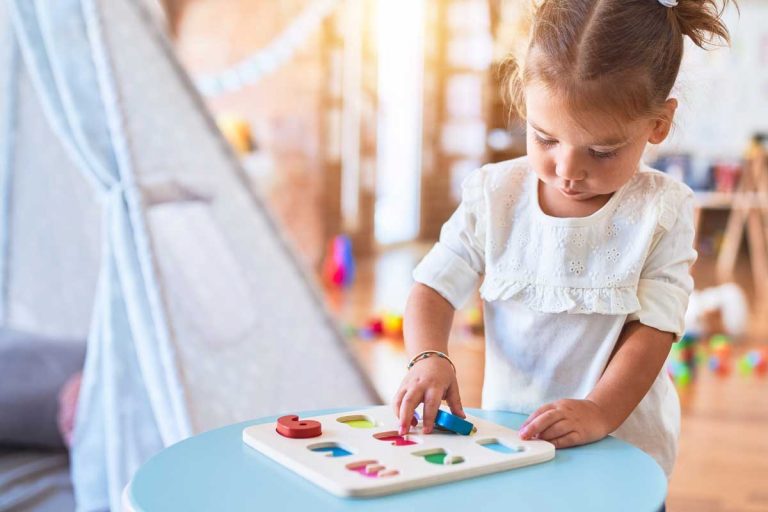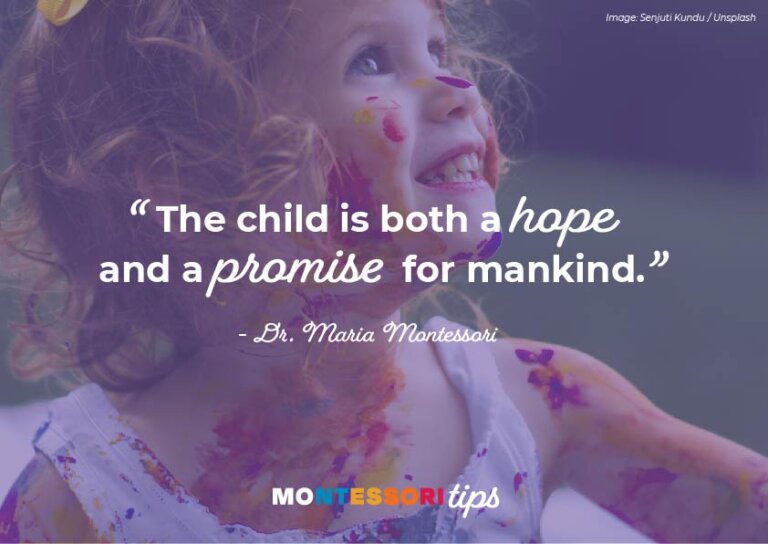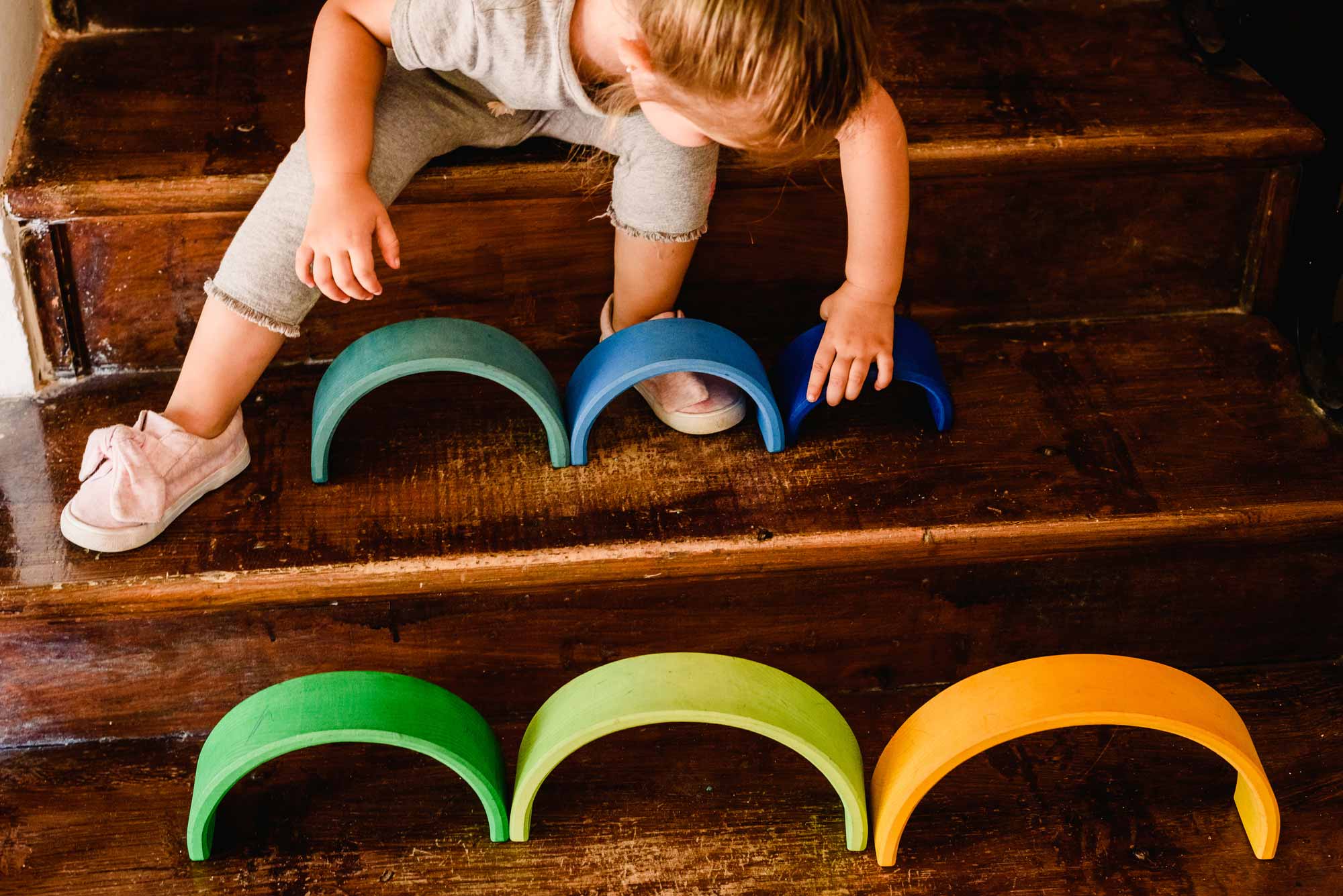The Montessori way of learning uses sensorial activities to help children make classifications in their environment. With creative tools or toys (sensorial materials), developing the child as a whole is the focus.
This article discusses sensorial Montessori materials, activities, their purpose, and some examples.
Sensorial Learning in Montessori
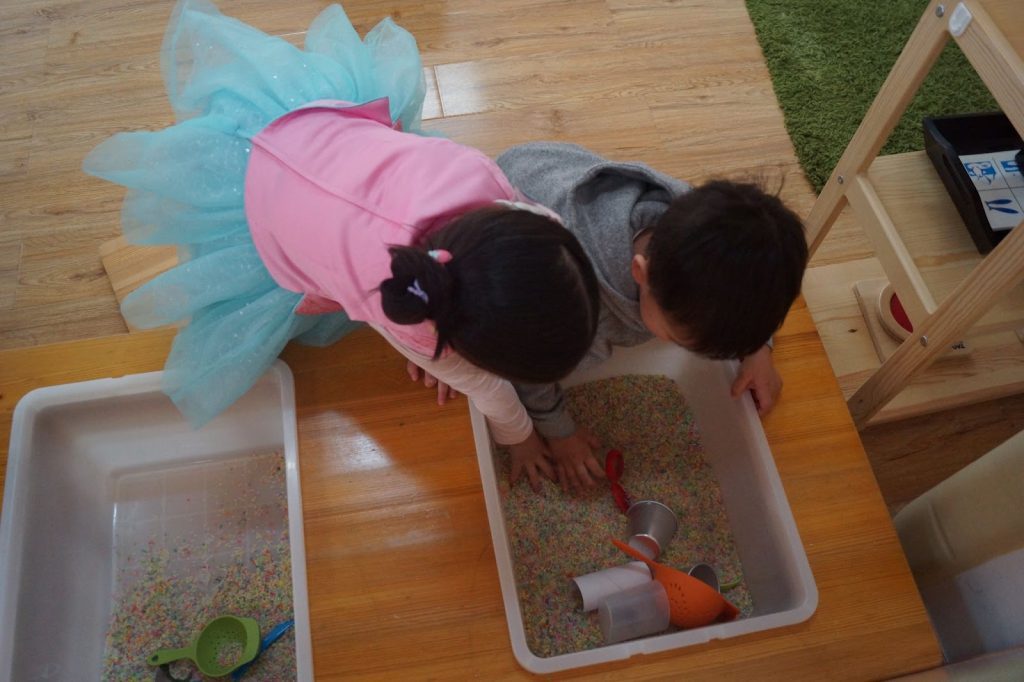
Dr. Maria Montessori believed, “The hands are the instruments of the mind.” She developed Montessori sensorial materials in the early 1900s to help children develop skills for order and discrimination and to refine and broaden the senses.
Through Montessori sensorial activities, a child’s senses are developed to help them understand and explore the world around them.
The Purpose of Sensorial Work in Montessori
Children are “sensorial explorers,” and sensorial work makes children learn about classifying things around them, making their own experiences in their environment.
Typically, the sensorial area in a Montessori classroom is divided into categories: auditory, color, olfactory, form, tactile, size, and gustatory.
Benefits of Sensorial Activities
In the broader sense, the sensorial materials and activities have several benefits:
- Promotes critical thinking and problem solving
- Enhances memory
- Reinforces childhood development; helps them acquire cognitive growth and motor skills
- Helps in calming children; eases their discomfort, and calms anxiety
- Built-in feedback of sensorial materials helps in the control of error
- Develops self-confidence, along with the incentive to practice and improve
- Helps in structuring children’s sense perceptions and comprehending abstract concepts
When to Introduce Sensorial Materials
The early childhood stage, from ages 0 – 6 years, is a critical learning phase for children. Undoubtedly, our young ones are like sponges and absorb information quickly.
Rather than a simple tell approach, allowing children to do and learn by engaging in sensorial activities helps them learn best.
At about 2 – 2 1/2 years, children are given two essential sensitivities by nature: sensitivity to refine the senses and sensitivity for order. Helping them try something new through the Montessori method of sensorial lessons helps develop their abilities and gain knowledge early on.
Sensorial Materials – What is the Aim?
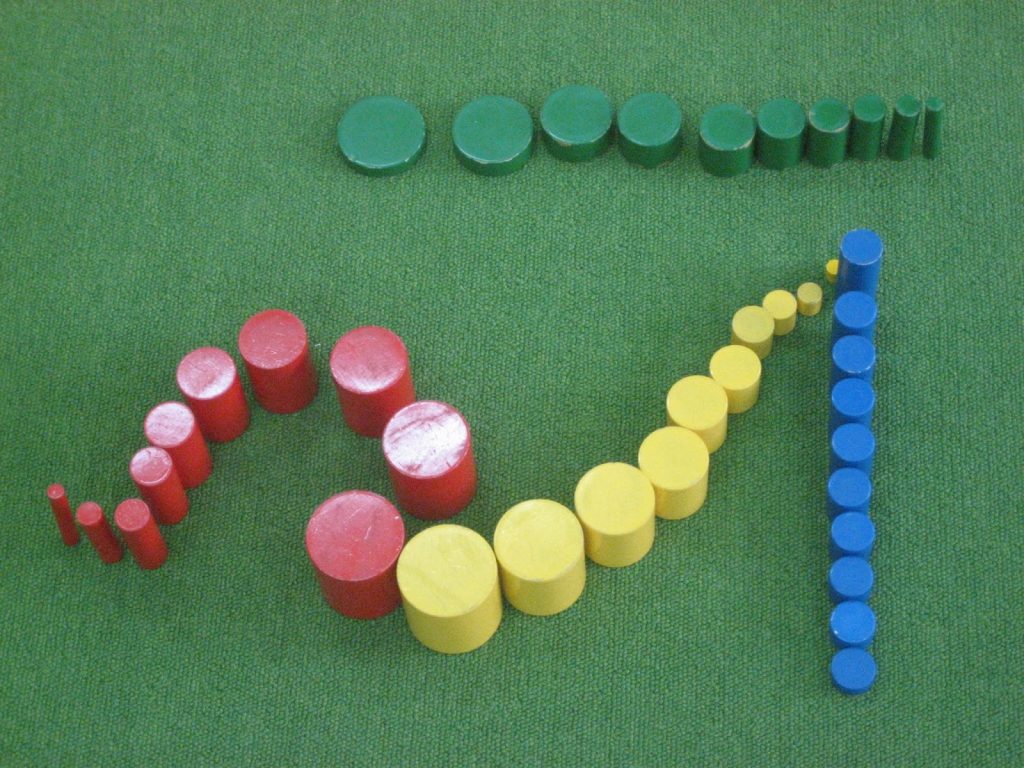
Sensorial materials are “materialized abstractions” that make abstract concepts into concrete materials. The design of each sensorial material encapsulates the following ideas:
- Helps isolate the one quality to be worked with, allowing the child to focus on the specific quality.
- Control of error helps the child make corrections by themselves.
- Aesthetically pleasing to attract the child’s attention and manipulate materials with ease.
- Material is limited; not all of one quality or piece of information is given to the child; it helps peak curiosity and builds interest to learn.
Different Areas of Sensorial Learning
The sensorial exercises are designed to use the materials to cover every quality perceivable by a child’s senses. Unlike materials used for Practical Life, the sensory materials have never been seen or used by the child in everyday life.
There are 8 categories of exercises:
- Auditory: Heightens children’s sense of sound perception and discriminates between sounds. Examples of activities include Montessori Bells and the Sound Cylinders.
- Visual: Helps in visual discrimination. Activities are separated for color awareness, form/shape awareness, and dimension (size, length, breadth, and width) differentiation.
- Thermic: Refines sense of temperature.
- Baric: Helps feel the difference in pressure or weight of objects.
- Tactile: Learning through the sense of touch. Tactile lessons involve encouraging children to touch different textures and heighten their perception. Examples of activities include Thermic Bottles, Mystery Bag, Fabric Boxes, and Baric Tablets.
- Olfactory: Develops children’s sense of smell and helps differentiate different types of smell. The best example is The Smelling Bottles activity.
- Stereognostic: It involves making the child feel objects and recognize them based on what is felt.
- Gustatory: Helps distinguish one taste from another. They can also learn where different taste buds are in the mouth. A good activity example is tasting bottles.
Examples of Montessori Sensorial Materials

The Montessori sensorial materials are creatively designed tools or toys that help develop a child’s ability to retain the lessons learned through “experience.” Here are some examples of sensorial materials that make the child’s learning fun and engaging.
The Pink Tower
Age: 2 1/2 – 3 1/2 years
The iconic and favorite of all sensorial materials, the Pink Tower has remained unchanged through time and is found in Montessori classrooms worldwide.
It consists of 10 cubes differing in all three dimensions ranging from 1 cubic centimeter to 10 cubic centimeters. Since the cubes are of the same color, shape, and texture, it helps children focus on another essential quality – size.
By stacking the cubes, one over the other, children learn self-control, and the control of error helps them realize any mistakes and rectify them.
Explore Pink Towers on Etsy »
Brown Stair
Age: 3 – 3 1/2 years
With 10 brown stairs of the same length (20 cm), and different heights and thickness, the faces at the end represent 1 to 10.
It helps develop a child’s mathematical mind and visual discrimination of dimensions. It also helps refine voluntary movement and helps develop grip.
Explore Brown Stairs on Etsy »
Long Red Rods
Age: 3 – 4 years
This activity uses 10 red rods that differ by one dimension (length varies from 10 cm – 100 cm). This sensorial material improves a child’s muscular perception of distance and visuals.
Explore Long Red Rods on Etsy »
Knobbed Cylinders
Age: 2 1/2 – 3 1/2 years
The knobbed cylinders comprise the very first lesson in the sensorial area in a Montessori classroom. It has 10 wooden cylinders of different dimensions. But, first, the cylinders need to be removed from the block, and the child needs to place them back where they belong.
It helps them understand different dimensions and their interplay.
Explore Knobbed Cylinders on Etsy »
Binomial Cube
Age: 3 – 4 years
This sensorial material contains a box with a blue cube and 3 blue and black matching prisms and a red cube and 3 red and black matching prisms. It helps develop visual discrimination of color, shape, and pattern.
Explore Binomial Cubes on Etsy »
Constructive Triangles
Age: 4 – 5 years
The material used for the activity with constructive triangles comprises the Small Hexagonal Box, Large Hexagonal Box, Triangle Box, Rectangle Box, and Blue Triangle Box.
With this, children can construct different geometric shapes with the triangles. It helps them be aware of shapes and sizes representative of the Geometric Cabinet.
Explore Constructive Triangles on Etsy »
Final Thoughts
Montessori sensorial materials are designed to help children explore and refine their senses. The young ones will love this learning technique and be better prepared for later Montessori activities.
If you’re interested in learning about Montessori parenting, read about it in Montessori Parenting – How to Help Your Child Flourish and How to Successfully Use Montessori at Home.

